The following posting is a by-product of a project undertaken by the History Committee of the Smyrna Arts and Cultural Council in which more than 1400 historical photographs of Smyrna were gathered and topically categorized. This is the second of a series of Smyrna history photographic essays to appear on this blog, the first on the topic of religion. WPM
In 1907, a Marietta Journal’s Smyrna correspondent qualified his enthusiasm over the many improvements Smyrna was experiencing in the aftermath of the introduction of trolley service in 1905, with the somewhat pointed observation: “Now, if our people would get together and pull together for another improvement that we must have, a good school system, the chances are Smyrna would grow rapidly.” As long as the local schools were deficient, the commentator recognized there was little prospect of Smyrna becoming the preferred suburb that so many of its leading citizens desired.
As to the schools, Smyrna at the turn of the 20th did not offer free, universal schooling to the children of the area. The State of Georgia as a whole lagged well behind other parts of the nation in that regard. Not until 1916, for example, did Georgia adopt a compulsory education act—the second to the last state of the 48 to do so. Only Mississippi was slower to act on that front.
Public education has traditionally been a local responsibility. A Smyrna School Committee did exist, but its records have disappeared, possibly destroyed in the same town hall fire that is said to have consumed the proceedings of the Mayor and Council.
A number of one-room school houses had existed in the general area from an early date. One of these apparently stood on Atlanta Road near its present day intersection with Fuller Street. But these would seem to have been privately owned and operated ventures. And then there was the Smyrna Academy, founded in the 1840s, an institution that enrolled more than a hundred students by 1861, but that had closed its doors when the war broke out so that its young men could enroll in the ranks of the Confederate army.
Though the Smyrna Academy reopened briefly after the Civil War, it did not long survive. The academy building, however, later housed a public school that offered elementary as well as high school grades, but the high school division had rather limited enrollment. Such schools as existed in Smyrna, it should be emphasized, were uniformly tuition-based and served white children only. Little money was furnished by either the county or by the town to support of these public schools, and families tho who could afford it often enrolled their children in the better equipped Marietta system.
However, the public’s demand for improved schools was on the upswing in the first two decades of the 20th century and by 1920 the elementary division of the Smyrna Public Schools was comfortably ensconced in a $30,000 purpose-built structure on King Street. When this building was gutted by fire in 1924 (underscoring the inadequacies of Smyrna’s poorly equipped volunteer Fire Department), the people of Smyrna almost immediately authorized an additional $20,000 bond issue for the reconstruction of the damaged building, doing so by the commanding margin of 248 to 97 votes.
Smyrna High School, however, enjoyed little patronage in these years, functioning as it did out of the inadequate academy building until 1926, and then moving to a succession of temporary locations over the next dozen years. Ruth Bourne, a member of the 1926 senior class, one of only ten seniors that year, recounted that shortly after her graduation the town gave up its quarters in the Academy building, and moved the high school to a series of somewhat shabby temporary locations—the Smyrna hotel on Atlanta Road; the recently vacated 1884 Baptist Church; and a building identified as the Samoset House on Spring Street. Not until 1938 would Smyrna High School be furnished with a purpose built structure, a building constructed by the depression era WPA.
In 1925 the State Legislature offered financial incentives to encourage the consolidation of all publicly funded schools under county authority. By 1933 all such schools in Cobb were administered by the County Department of Education with the exception of Marietta and Acworth. The Superintendent of the Cobb County Schools at that juncture was Francis T. Wills of Smyrna, an ordained Baptist Minister and prominent Smyrna resident; also a former member of the Smyrna City Council (serving in 1926 and 27).
Above passages excerpted with additional commentary from William P. Marchione, A Brief History of Smyrna, Georgia. History Press, 2013.
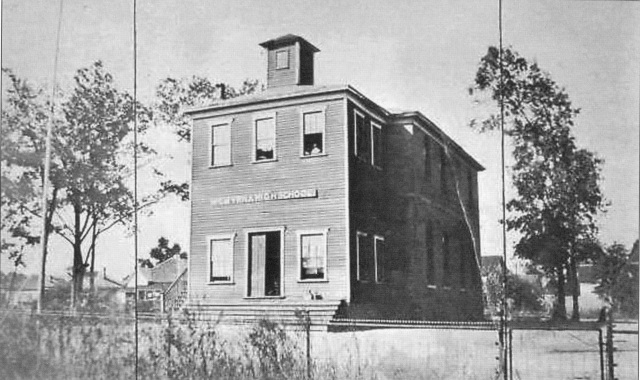
A local academy opened on the Smyrna Campground at some point before 1846. In 1850 the Smyrna Academy, as it was called, relocated to a purpose-built brick building measuring 32 by 44 feet square, a building that faced south toward the Memorial Cemetery and backed up to present-day West Spring Street (the street that runs through Market Village). There are no early photographs of the Smyrna Academy known to exist. The view appearing here dates from the late 19th century when the building had been renamed Smyrna High School. The wooden facade was added to the brick main structure at an indeterminate date.
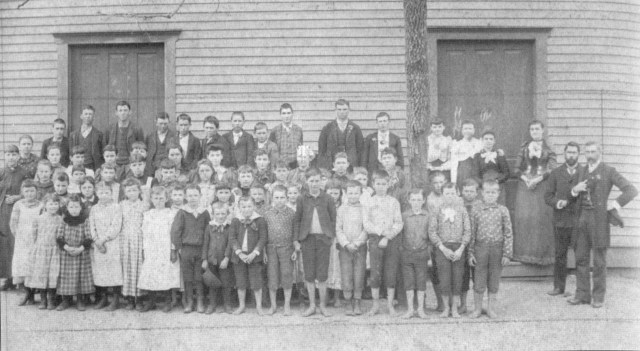
Mr. Mizell’s School held in 1895 in the old Masonic Hall building (Nelms Hall) located at the southwest corner of Atlanta Road and Powder Springs Street, across Powder Springs Street from the 1884 Smyrna First Baptist Church building. It is unclear whether this school was functioning as a public or private school, but the size of the enrollment, would suggest that it enjoyed public support.
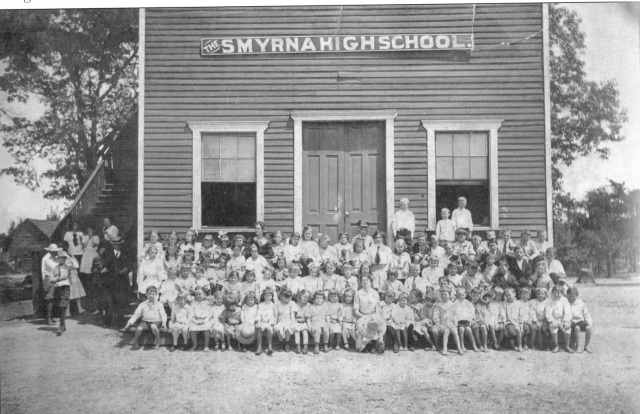
Students and school faculty in front of the academy building in 1905. Note the age of the students, showing that suggesting that it was a general school serving all ages, despite its being identified as a high school. It is also probable that high school enrollment was somewhat low. In that era few students attended high school. Moreover, a streetcar line, installed in 1905, allowed students of high school age to commute conveniently to Marietta High School. It should be emphasized that both the Smyrna and Marietta schools required payment of a tuition by all students.
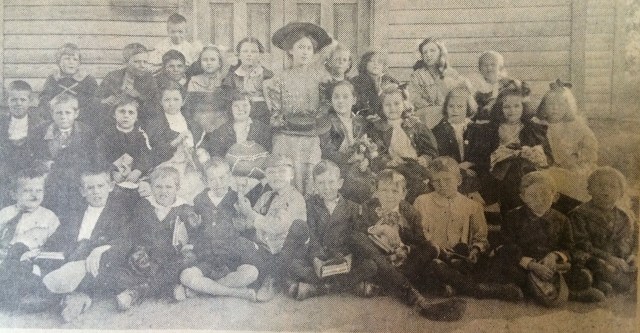 In this 1907 view we see a group of students outside the public school in the Academy building, with their teacher, Mazie Whitfield (born in 1890),, who was only 17 years of age at the time (higher education was then not yet a requirement to teach). According to Miss Whitfield’s memoir, “Past, Present, and Future,” written in 1967 under her married name, Mazie Whitfield Nelson, the school in 1907 housed nine grades and had a faculty of three. Mazie taught the lower grades (1, 2, and 3), while another female taught grades 4, 5, and 6, and a male teacher (take note of the sexual hierarchy here), taught grades 7, 8, and 9 and also functioned as the school’s principal. Interestingly there is no mention of high school level grades in , despite the characterization of the former academy as “Smyrna High School.”
In this 1907 view we see a group of students outside the public school in the Academy building, with their teacher, Mazie Whitfield (born in 1890),, who was only 17 years of age at the time (higher education was then not yet a requirement to teach). According to Miss Whitfield’s memoir, “Past, Present, and Future,” written in 1967 under her married name, Mazie Whitfield Nelson, the school in 1907 housed nine grades and had a faculty of three. Mazie taught the lower grades (1, 2, and 3), while another female taught grades 4, 5, and 6, and a male teacher (take note of the sexual hierarchy here), taught grades 7, 8, and 9 and also functioned as the school’s principal. Interestingly there is no mention of high school level grades in , despite the characterization of the former academy as “Smyrna High School.”

The upper division of the Smyrna School in 1907, seated in front of the old 1883 Methodist Church. The teacher was D. A. Sewall. One of the students pictured here, Lorena Pace (Lorena Pace Pruitt) would make history as Georgia’s first female mayor, serving the city from 1946 to 1948.
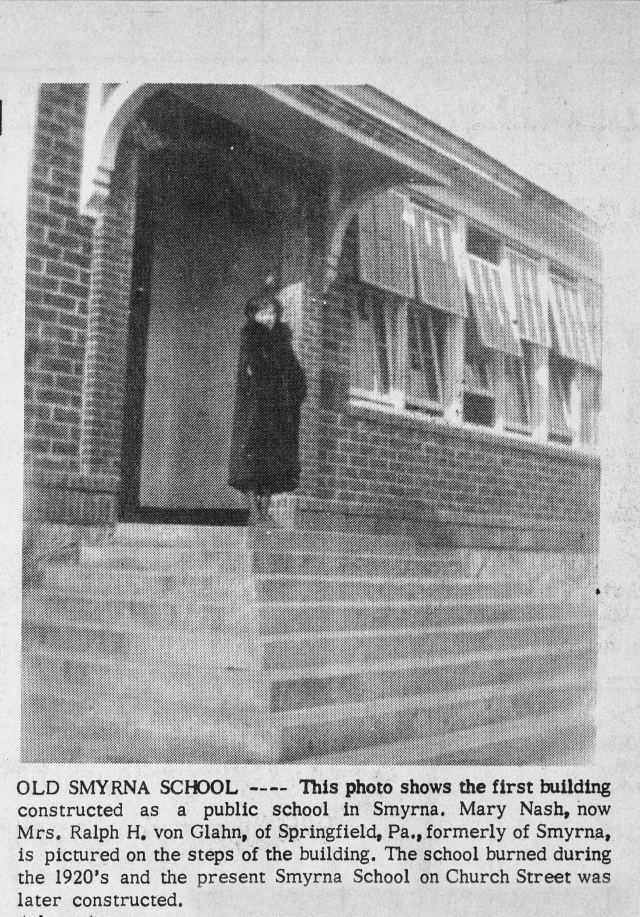
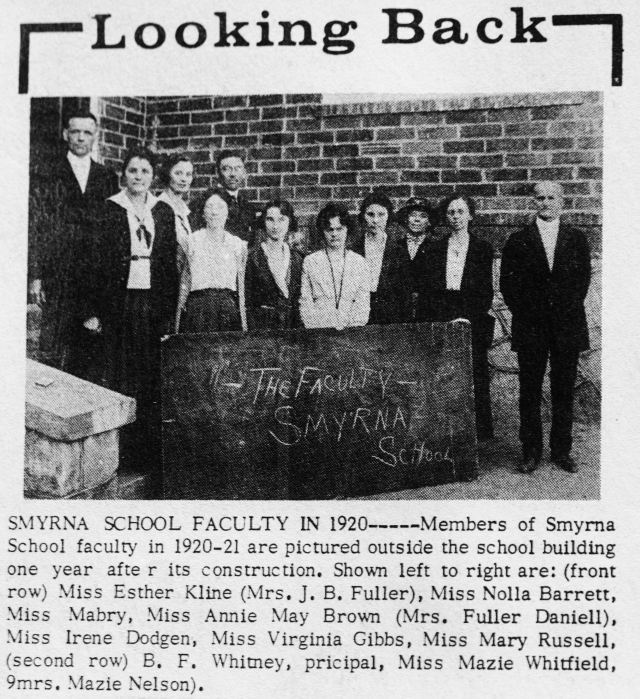
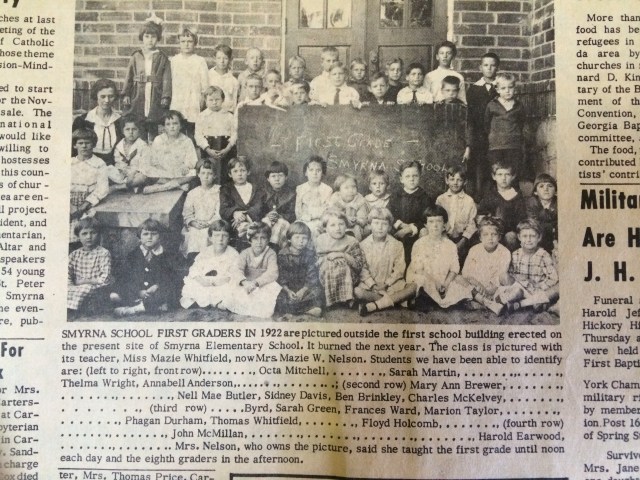
The previous three photographs picture the Smyrna School that was built on the lot opposite the present Smyrna Baptist near the corner of King and Stephens Street. This building cost the city $30,000 at a time when its annual budget stood at less than $7,500. This bond issue for this building was decisively approved in a referendum by the town’s voters, an indication of the strong support for improvements that would make Smyrna a suitable location for commuters to settle (a function of the transformation of the city from an agricultural village into a preferred suburb). Unfortunately, just a few years after its construction, in 1924, this state-of-the-art school building, said to be one of the finest then existing in Cobb County, was destroyed by fire.

With the loss of the 1920 school house by fire in 1924, the voters of Smyrna approved an additional $20,000 bond issue for the reconstruction of their schoolhouse. The vote was 248 to 97.
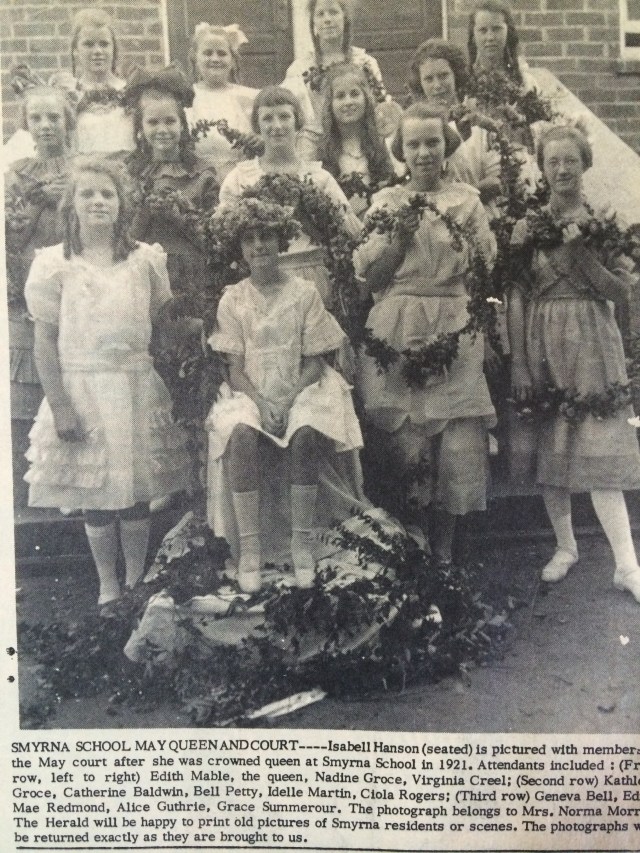
A 1921 photo of the Smyrna School May Queen and Court
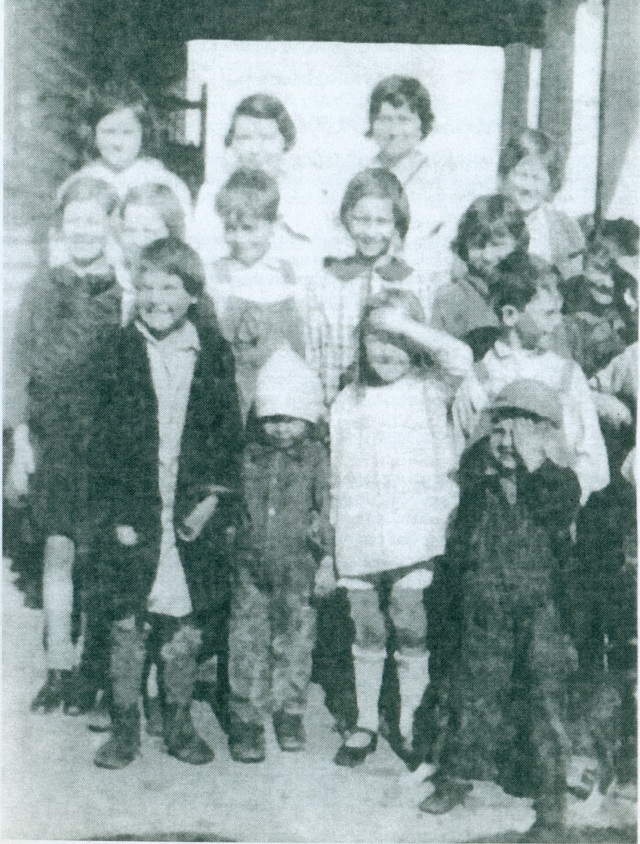
There were other schools in the general area, beyond the limited boundaries of Smyrna. One of these was the Bethel School, seen here about 1920, a Cobb County schoolhouse situated on Spring Road near what is now the intersection of Cumberland Parkway.
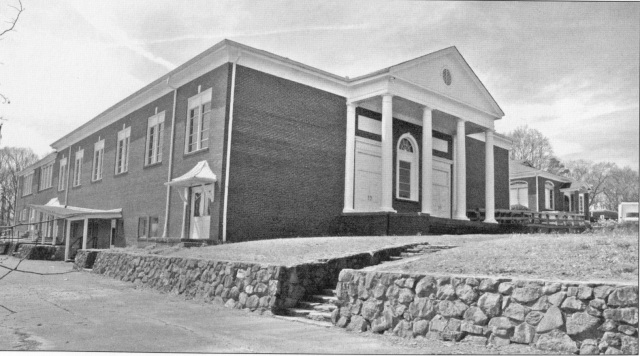
Established in a log cabin in 1896, and at First called the Locust Grove School, the name of this school was changed to the Fitzhugh Lee School in 1930 to mark the dedication of the building pictured above. It was named for a Confederate general, nephew of General Robert E. Lee, who later served as Governor of Georgia and U.S. consul in Havana at the time of the outbreak of the Spanish American War. Sadly this handsome and historic building in Smyrna’s Oakdale section was recently demolished.
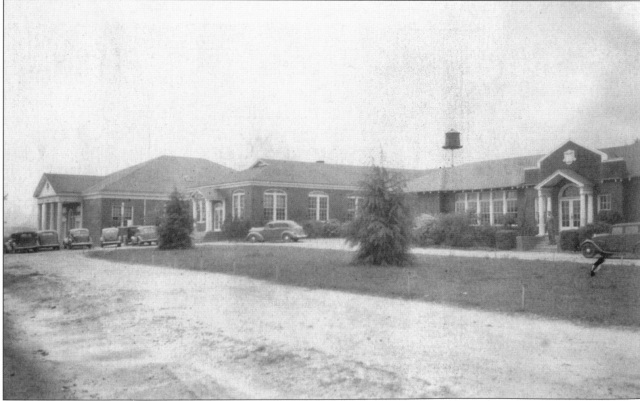
Fitzhugh Lee School, full view
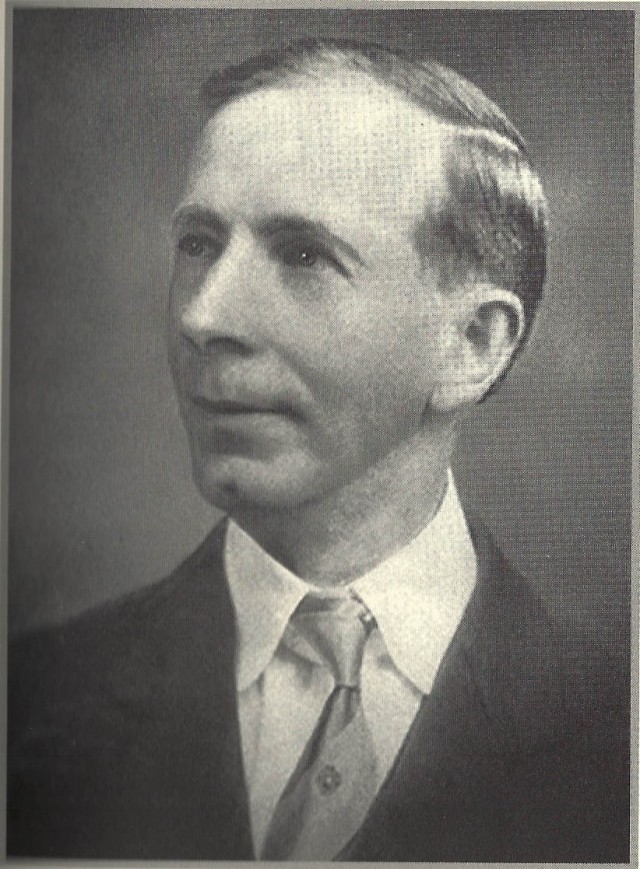
Francis T. Wills
By 1933 the county assumed the responsibility of managing the local schools and the Smyna school board went out of existence. The elected Superintendent of the Cobb County Public Schools from 1933 to 1944 was Frederick T. Wills who resided on Lee Street in Smyrna, and who served on the Smyrna City Council in the late 1920s. An ordained Baptist minister, Wills is credited with keeping the schools open and teachers paid during the hard times of the Great Depression, and also with extending the school year to nine months in the white schools, and seven to eight months in the county’s “colored schools.”

The colored school in the Davenport Town African-American Community.
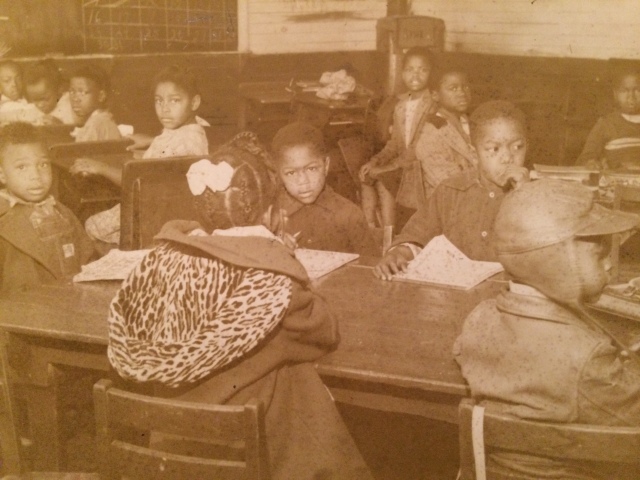
There was no local schoolhouse for African-Americans in the Smyrna area prior to 1938. In that year Cobb County constructed a school house for the area’s black children, a structure that was soon after burned in the October 1938 Smyrna Race Riot. Here we see an interior view of the Negro schoolhouse, located in the Davenport Town African-American neighborhood, about a mile east of downtown Smyrna. These photos are, unfortunately, undated.
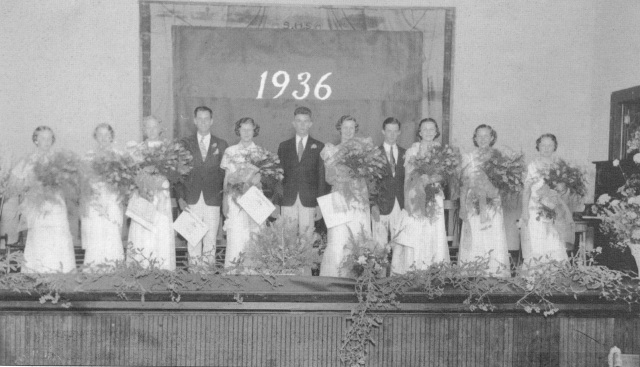
Graduating class, Smyrna High School, 1936. Note there were only eleven graduates and a preponderance of females. This is consistent with national trends. While young men generally entered the work force at an early date, young women remained in the safe haven of the schools, where higher education was regarded primarily as preparatory to marriage and motherhood.
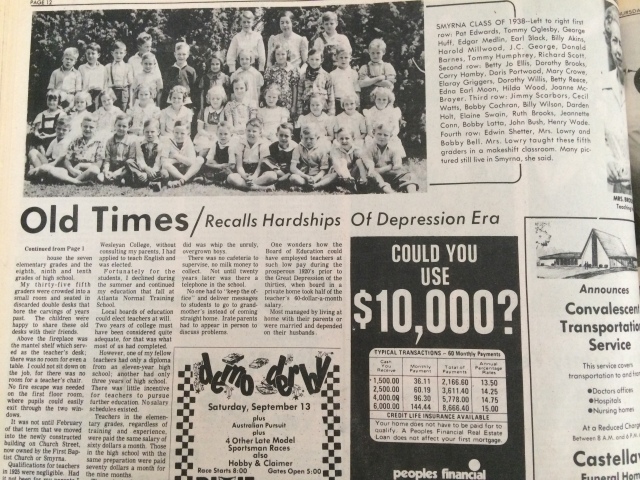
A Smyrna class in 1938, taught by Mrs. Lowry, presumably Judith Rice Lowry
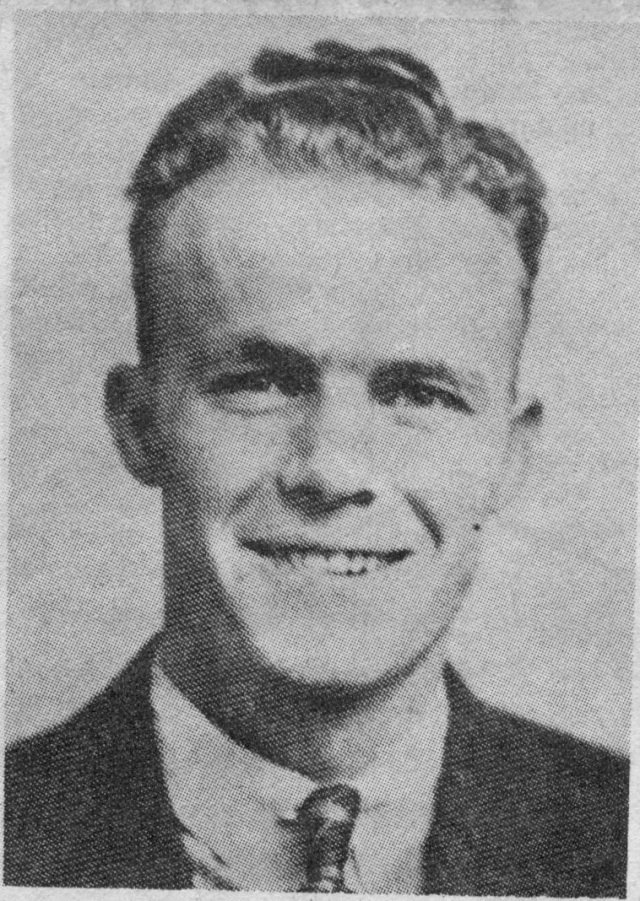
Two examples of Smyrna residents who commuted (often by streetcar) to Marietta in the 1930s to attend that city’s better equipped high school.
Marietta High School graduation photograph of Arthur Bacon, later to serve three terms as Mayor of Smyrna, father of current Mayor Max Bacon. Arthur was captain of the Marietta High School football team.

Max Parnell, a close friend of Arthur Bacon, also graduated from Marietta High in 1939. Parnell was a World War II flying ace, a war hero, who spent the last nine months of the war in a Japanese prison camp.
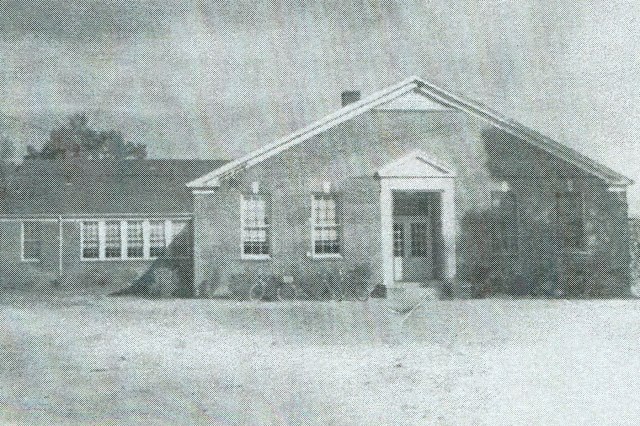
This small building was constructed by the WPA (Works Progress Administration) in 1938 as Smyrna’s first purpose-built high school. It stood next to the 1920-24 Smyrna School, at the corner of King and Stephens Streets, and is extant, now part of the First Baptist Church complex. Note the small size of the building. Enrollment in the high school must have been relatively small.
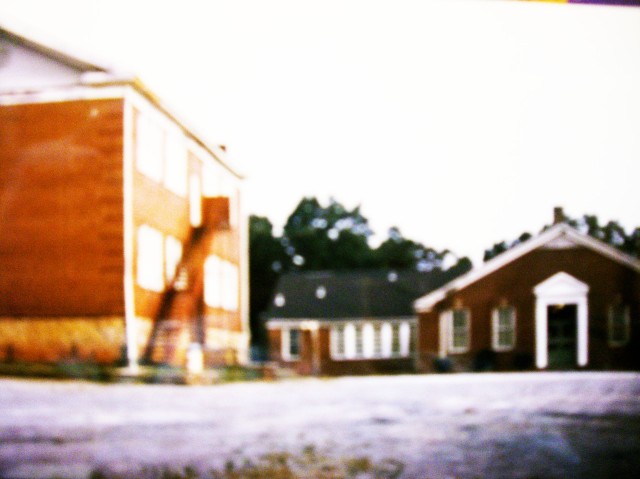
Photo showing the relationship of the 1938 Smyrna High School building to the 1920-24 Smyrna School building.
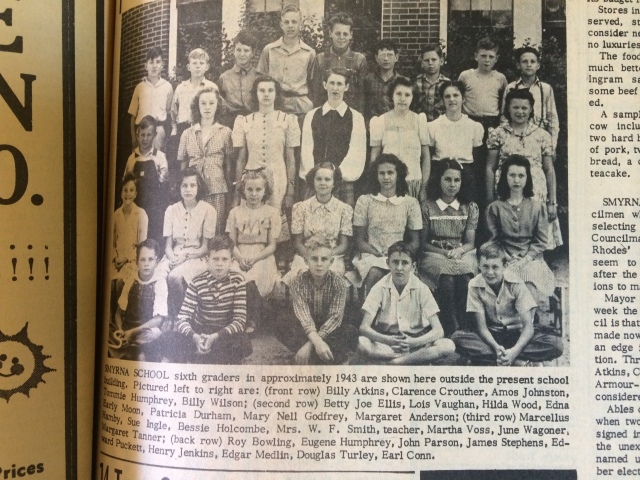
Smyrna School, sixth Grade Class, 1943, Mrs. W. F. Smith, teacher
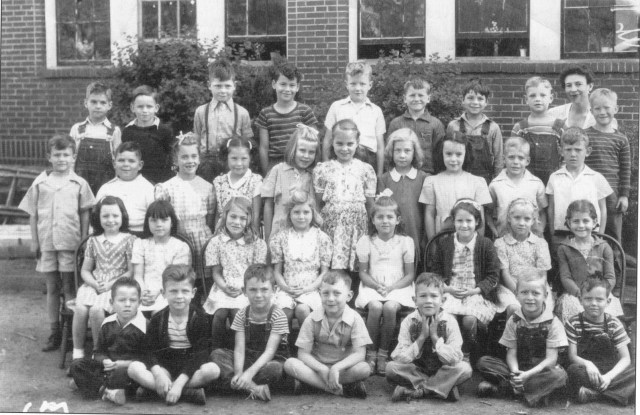
1944 Smyrna School 5th grade class, Mrs. Hunt, teacher (upper right hand corner)
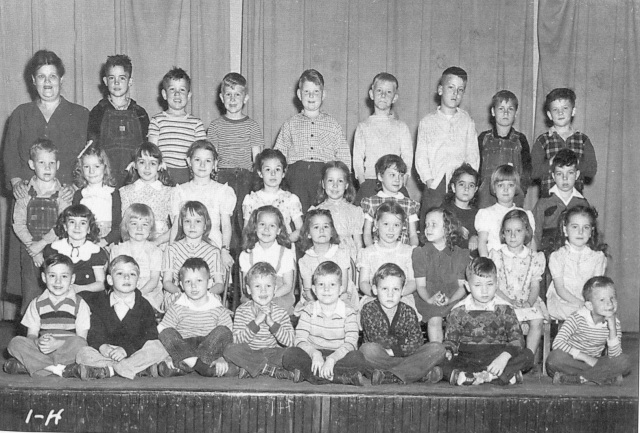
First grade class, Smyrna School, 1944, Maria Mitchell, teacher (upper left hand corner).
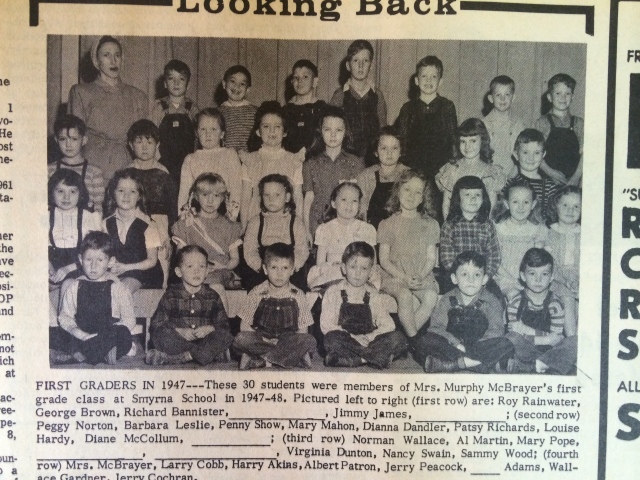
Smyrna School, 1947, First Grade class, Mrs. Murphy McBrayer, teacher.
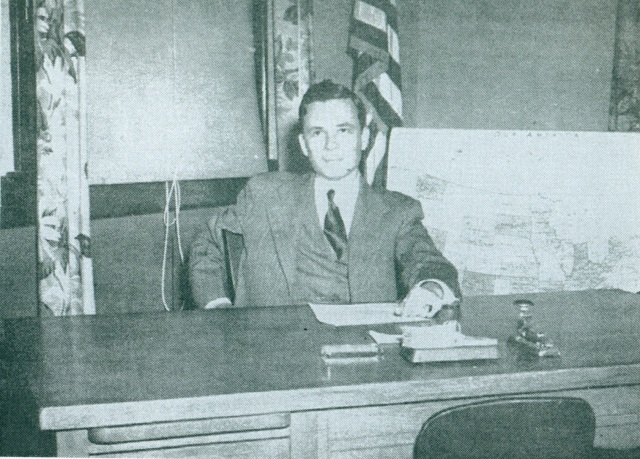
Jasper Griffin, Principal Smyrna School, 1950
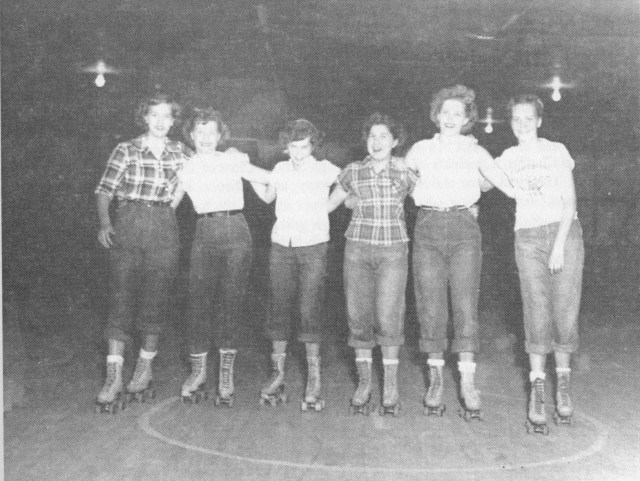
High School Girls at the local skating Rink on South Cobb Drive, 1951
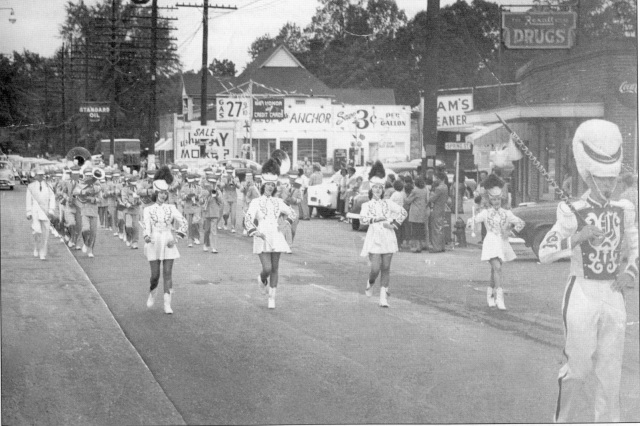
Campbell School Marching Band, Atlanta Road, downtown Smyrna, 1953
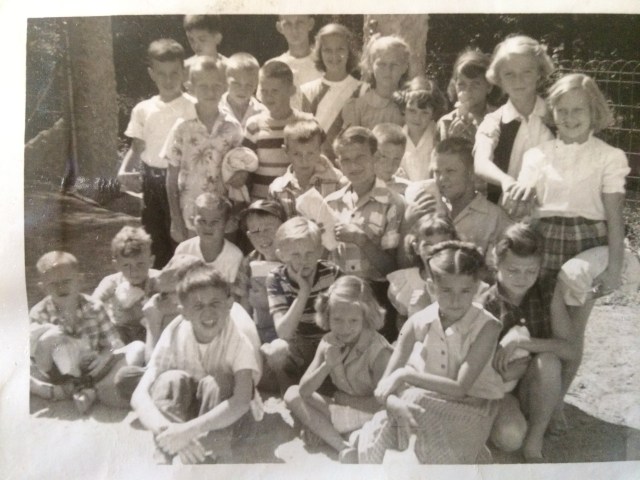
After school activities group, 1953
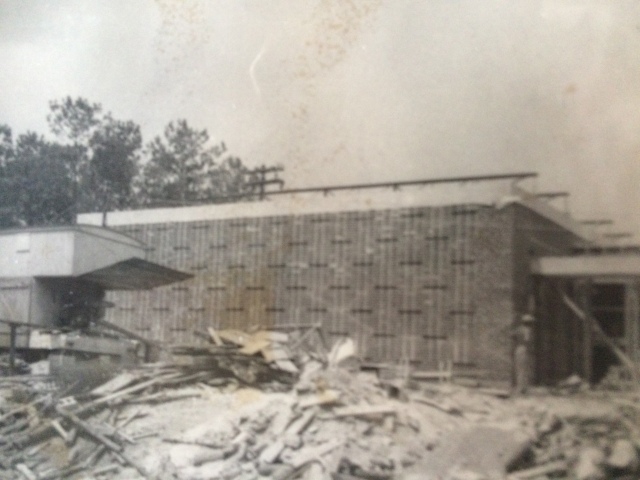
Belmont Hills Elementary School under construction, 1953
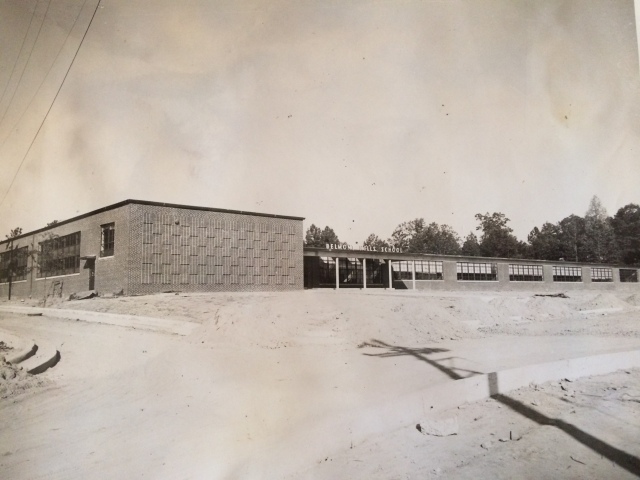
Belmont Hills Elementary School nearing completion, 1953
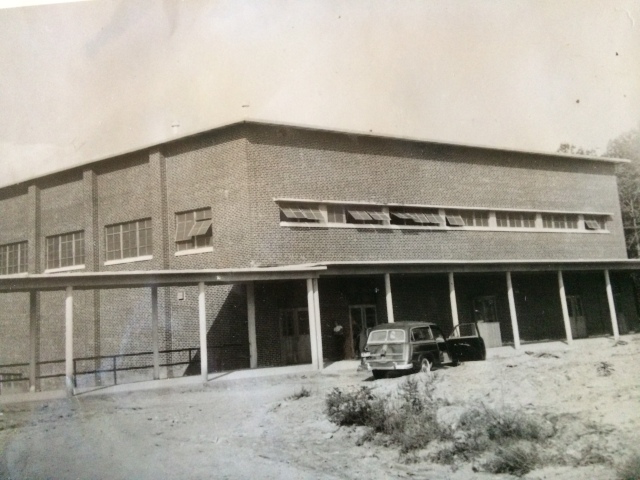
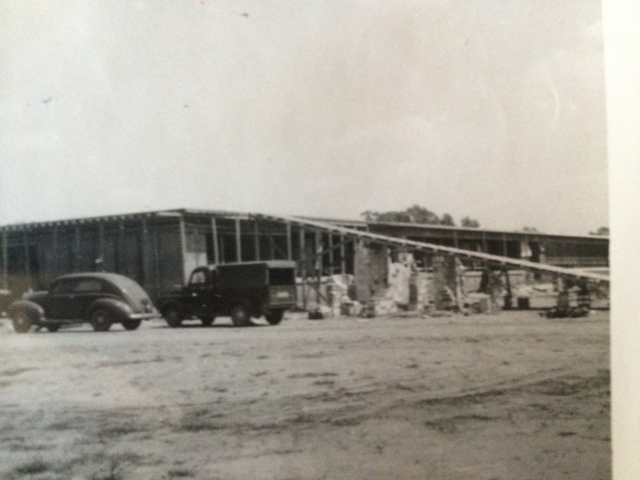
Orme-Campbell High School, now the Campbell Middle School under construction, 1953
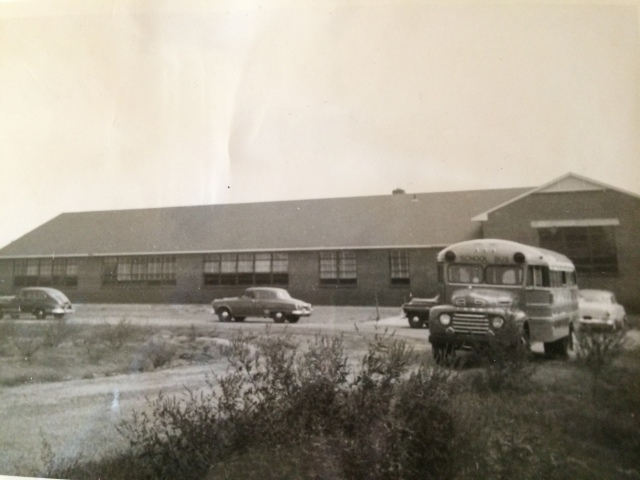
New school provided for black students in the segregated Rose Garden Hill Community, 1953
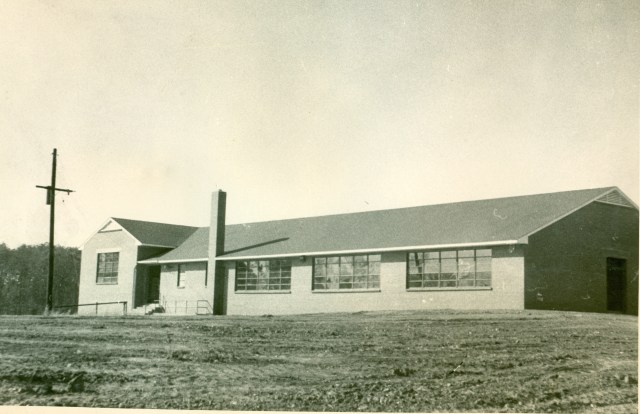
Another view of the newly constructed segregated Rose Garden Hill School, 1953
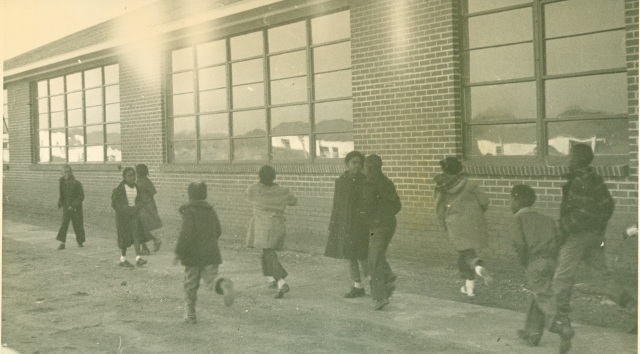
Children outside Rose Garden Hill School, 1953
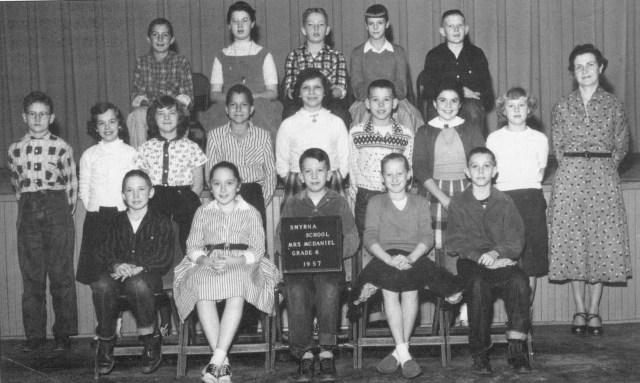
Smyrna School, Grade 6, Mrs. McDaniel Teacher, 1957
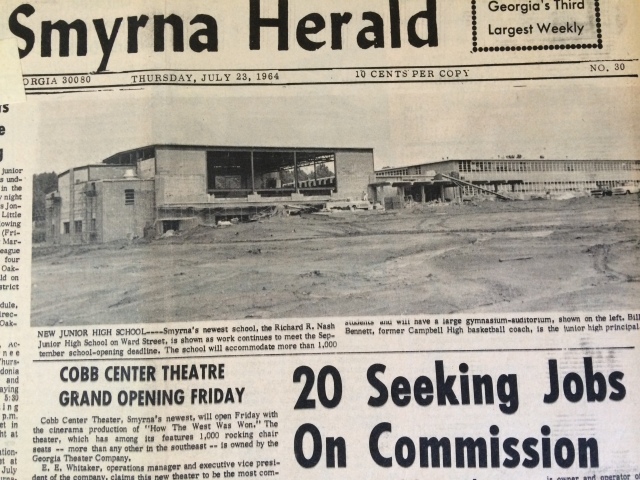
Nash Junior High School, under construction, 1964
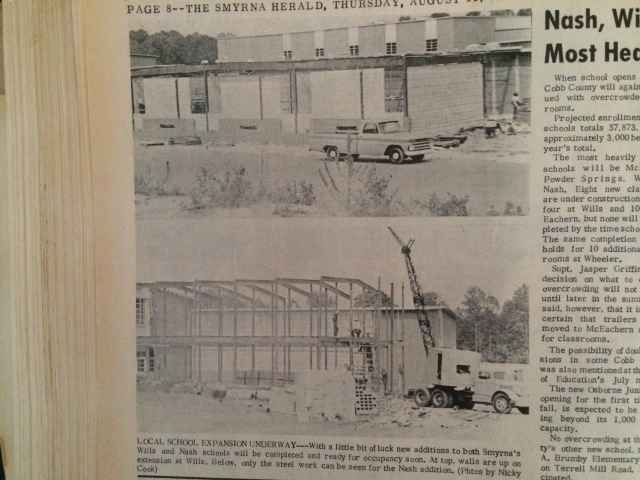
Nash & Wills Schools undergoing construction, 1966
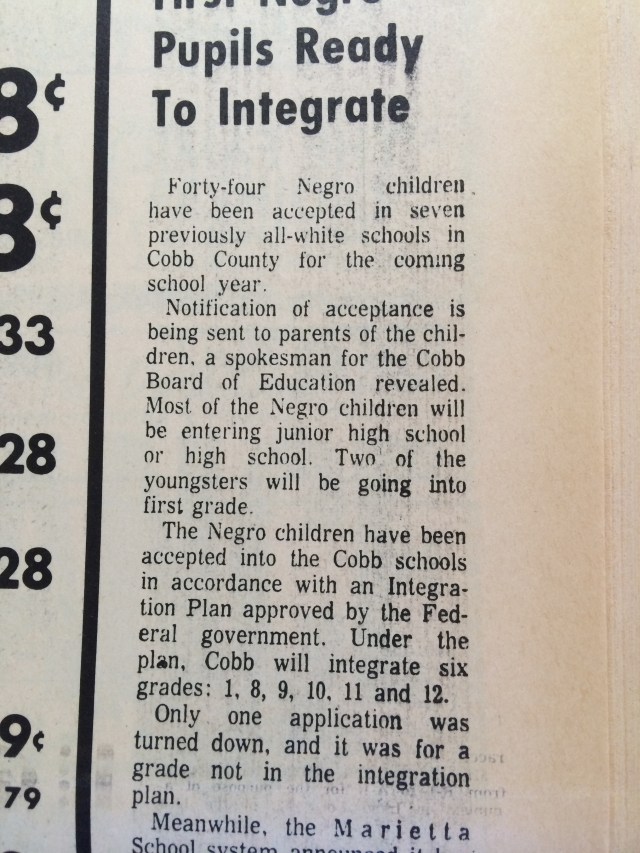
Integration of Smyrna’s public schools to begin, Smyrna Herald, August 5, 1965.
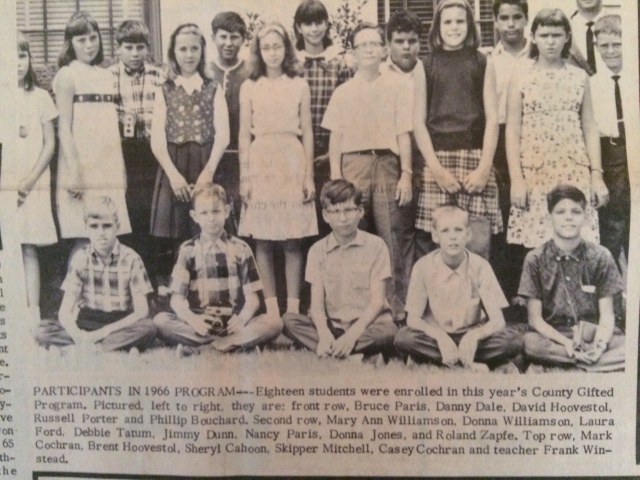
Gifted and Talented program, Hawthorne School, 1966
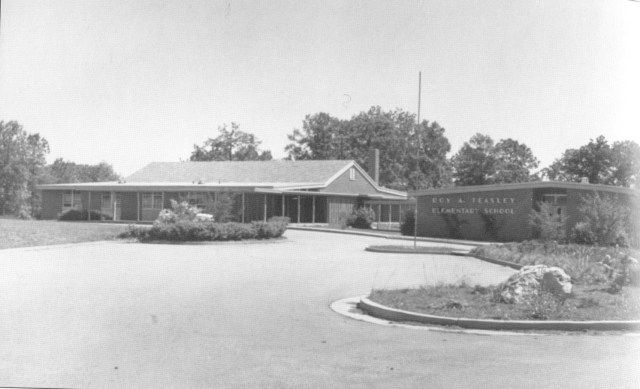
The Teasley Elementary School opened its doors in September 1968
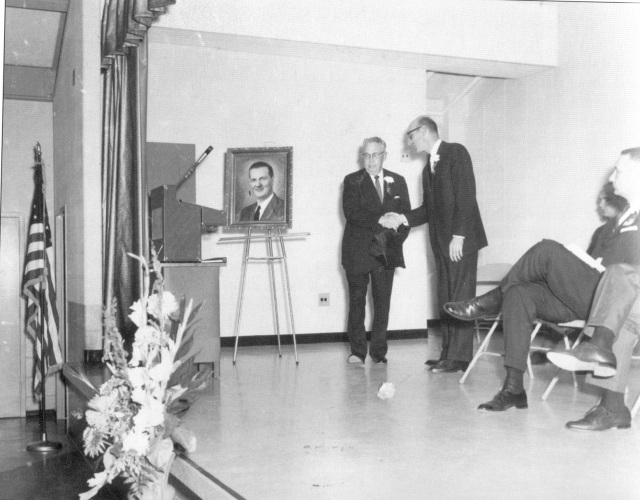
Dedication of a portrait of Roy Teasley, namesake of the Teasley Elementary School
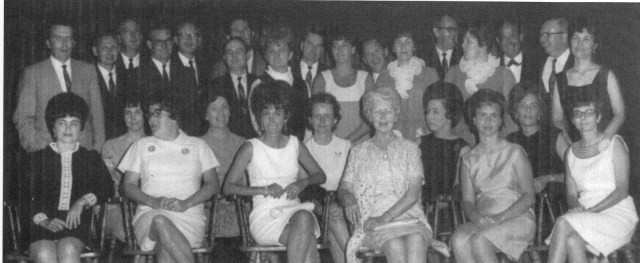
Last class reunion, Smyrna High School Class of 1951, held in 1968
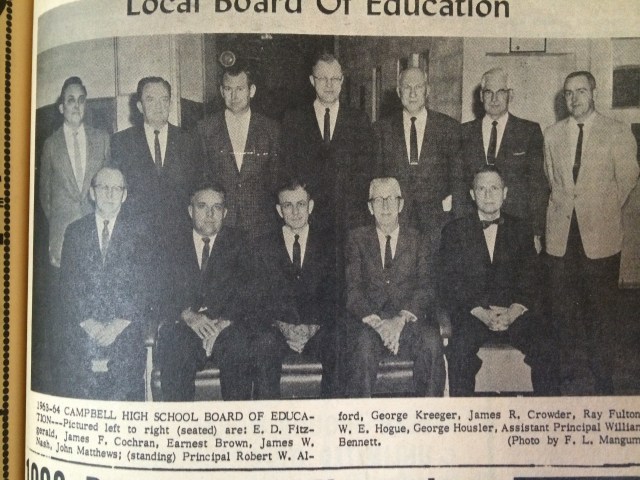
The Campbell High School Board of Education, 1963
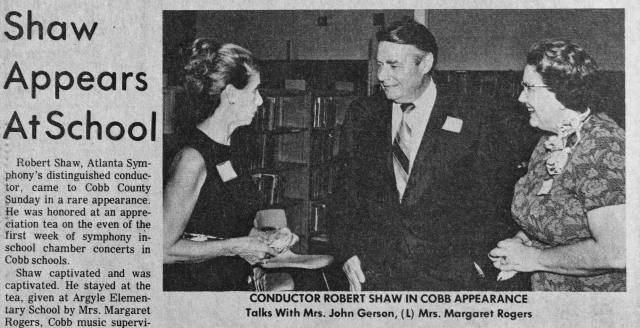
Famed Atlanta Symphony Orchestra conductor Robert Shaw visits the Argyle Elementary School in 1971.
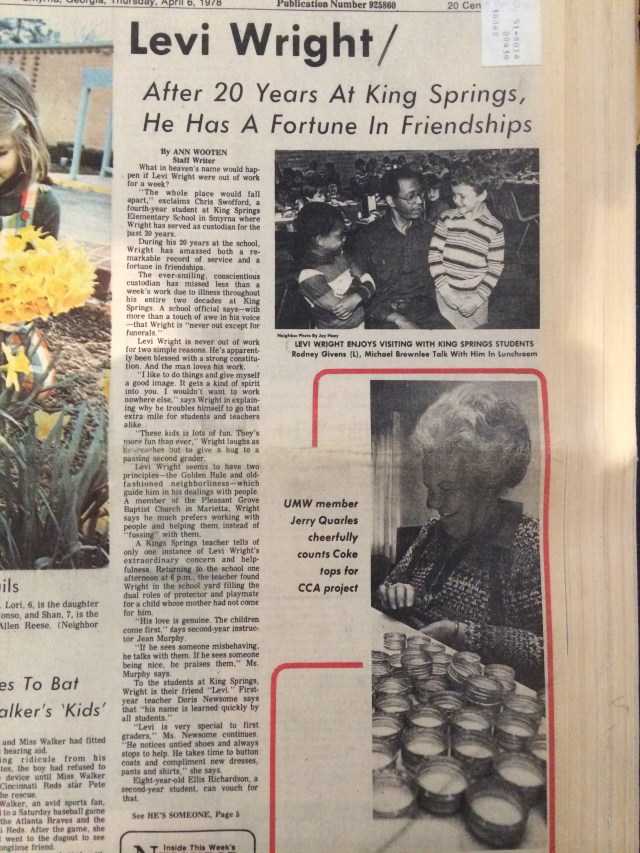
1978 article on the retirement of beloved King Springs School custodian Levi Wright

Campbell High’s most famous alumnus, Academy Award winning actress Julia Roberts. This picture appeared in the 1985 Campbell High year Book

The New Smyrna Elementary School, 2015

I was a student in a middle school in Smyrna in 1964 over the winter to spring 1965. It was a one building two story school. My father was an engineer on a temporary contract in Marietta. I am trying to find the name of that middle school. Thank you.
PS. We lived on Benson, pool road and an apartment complex.
LikeLike